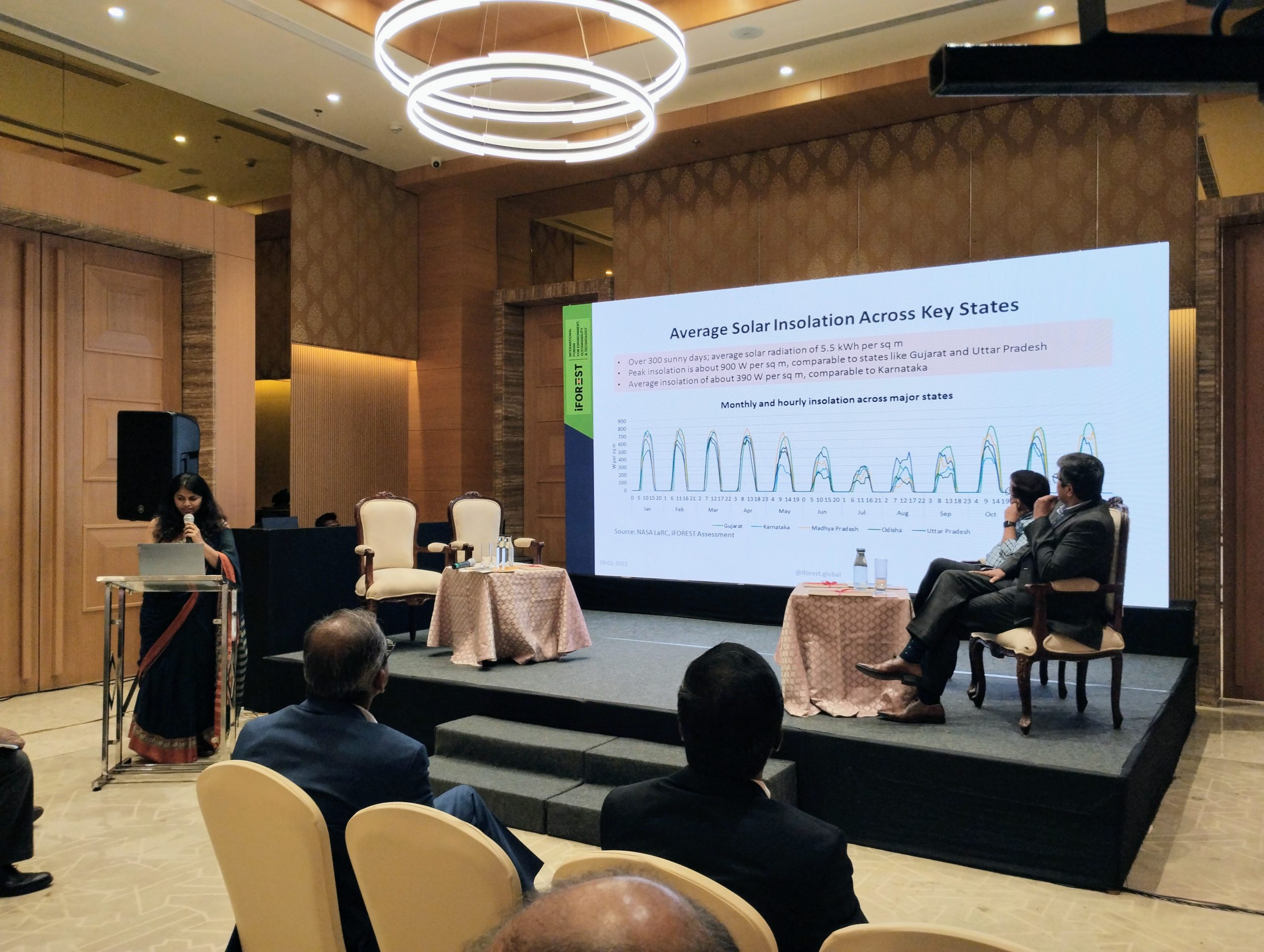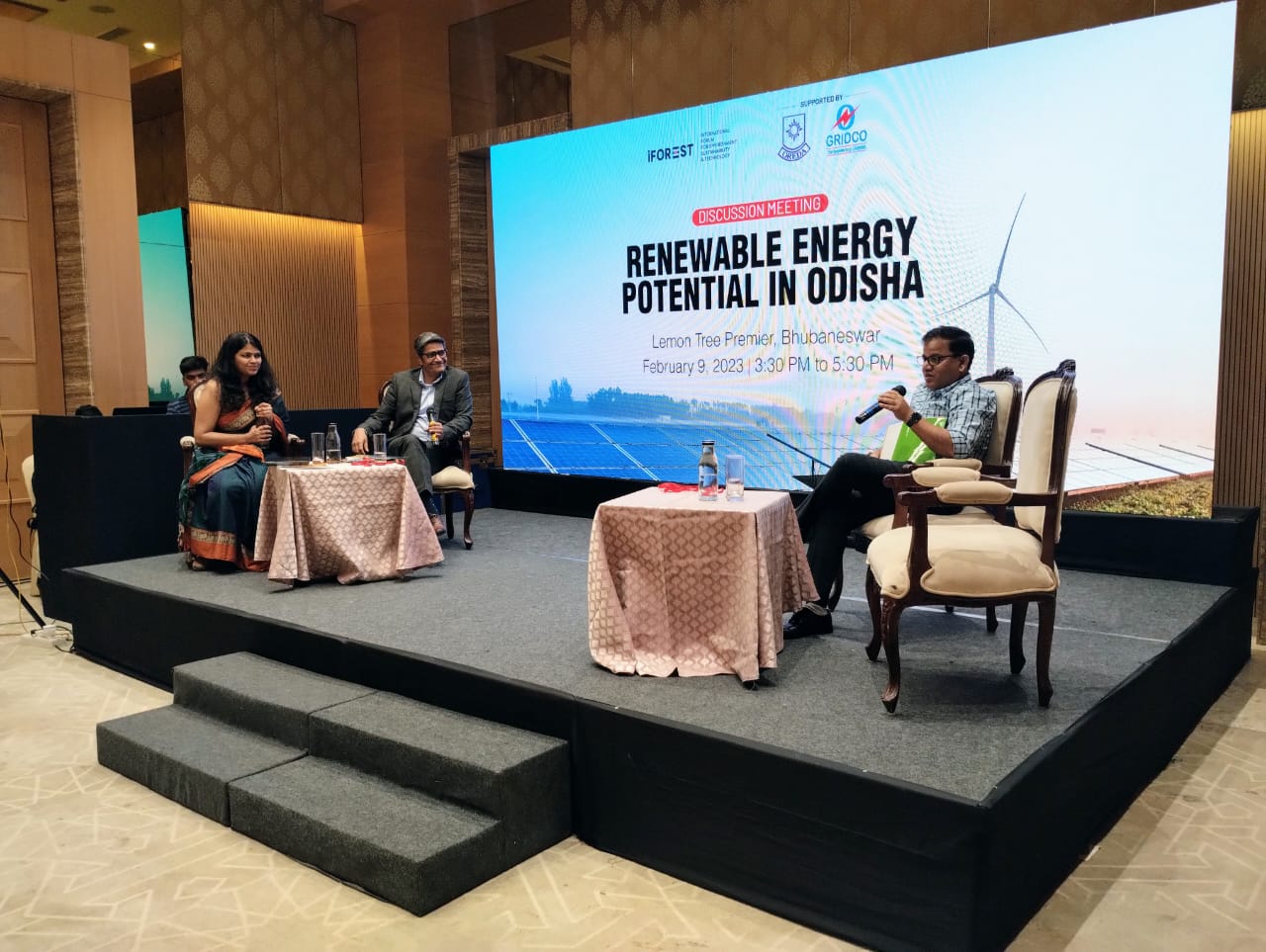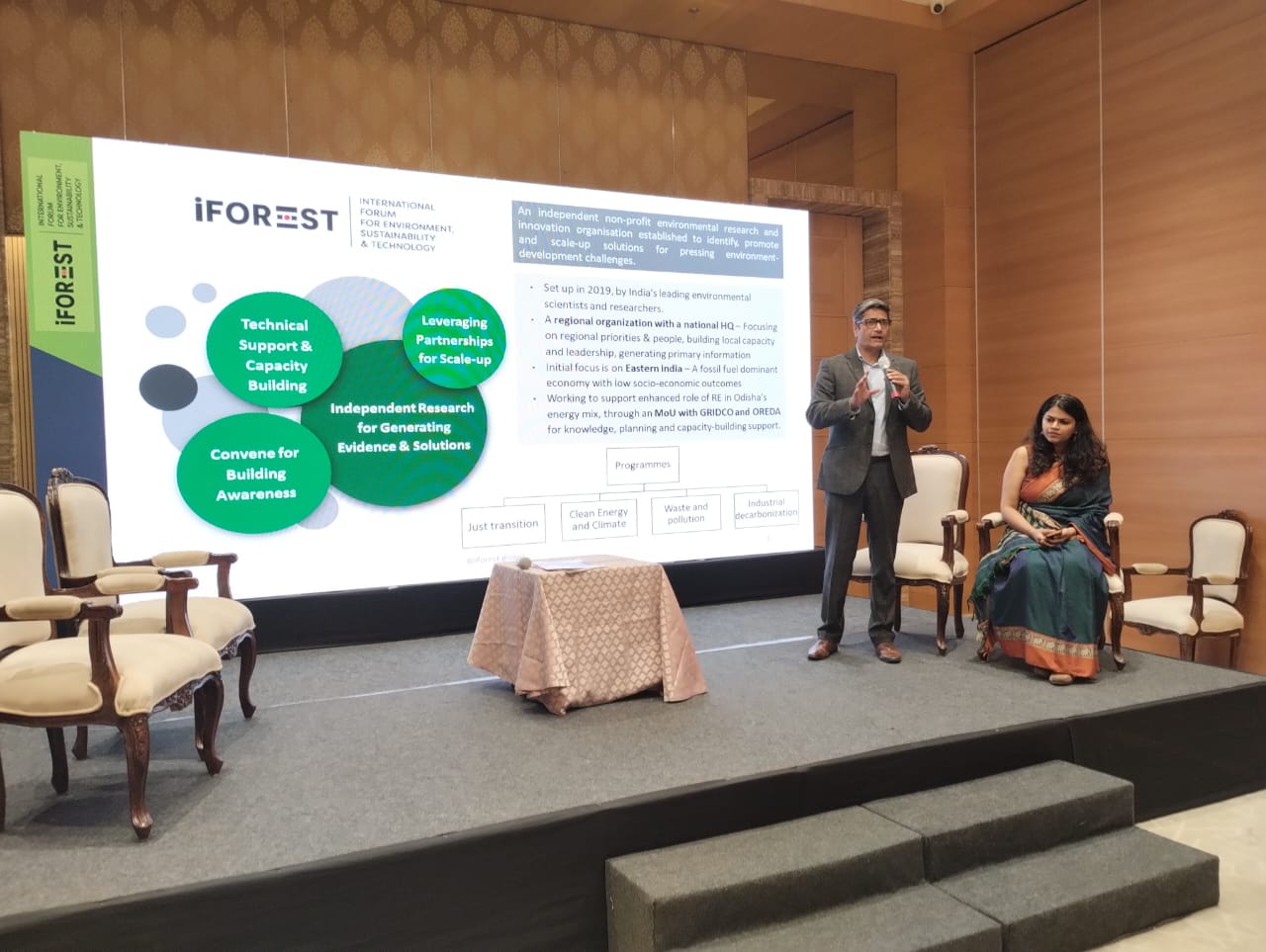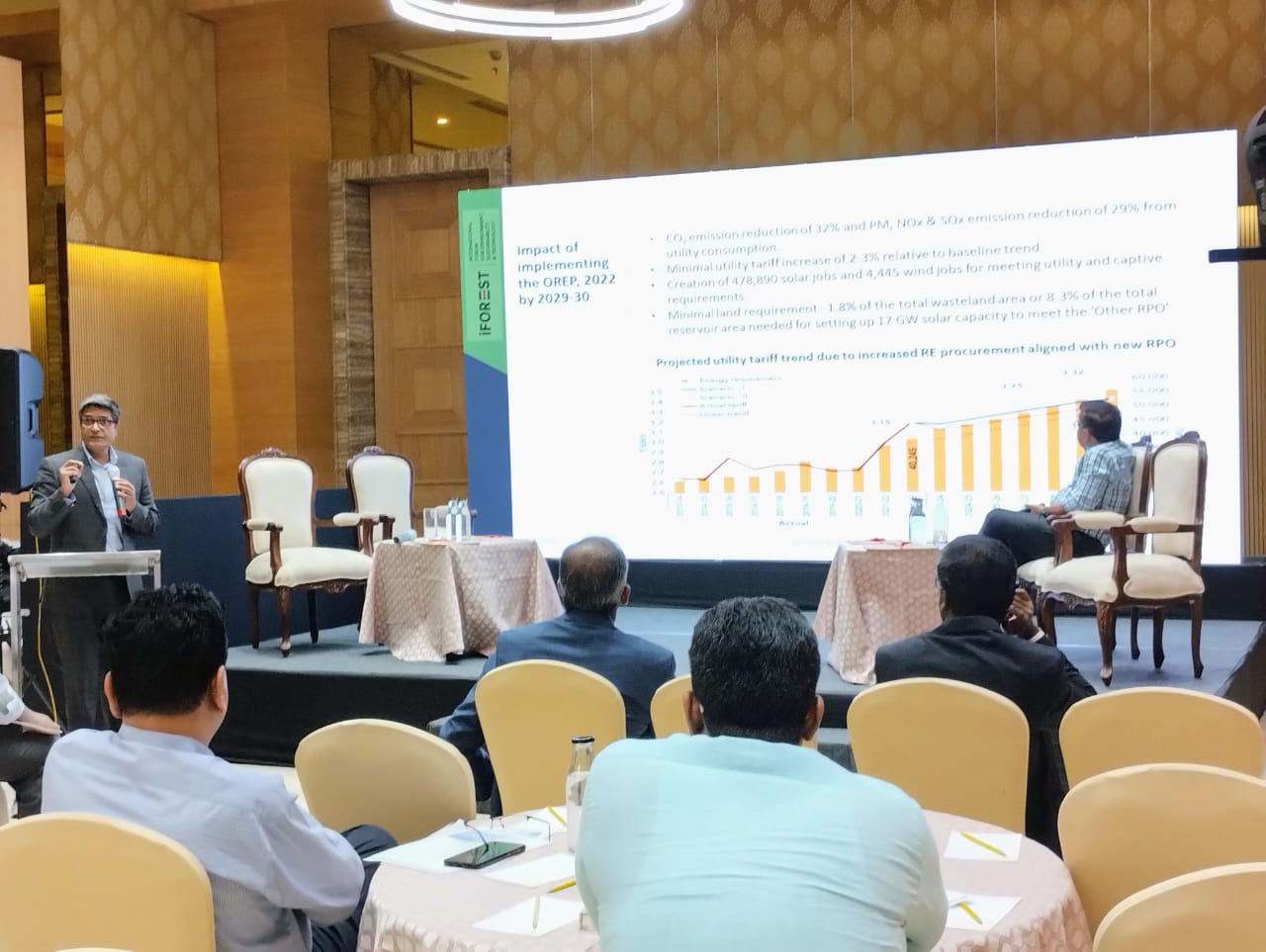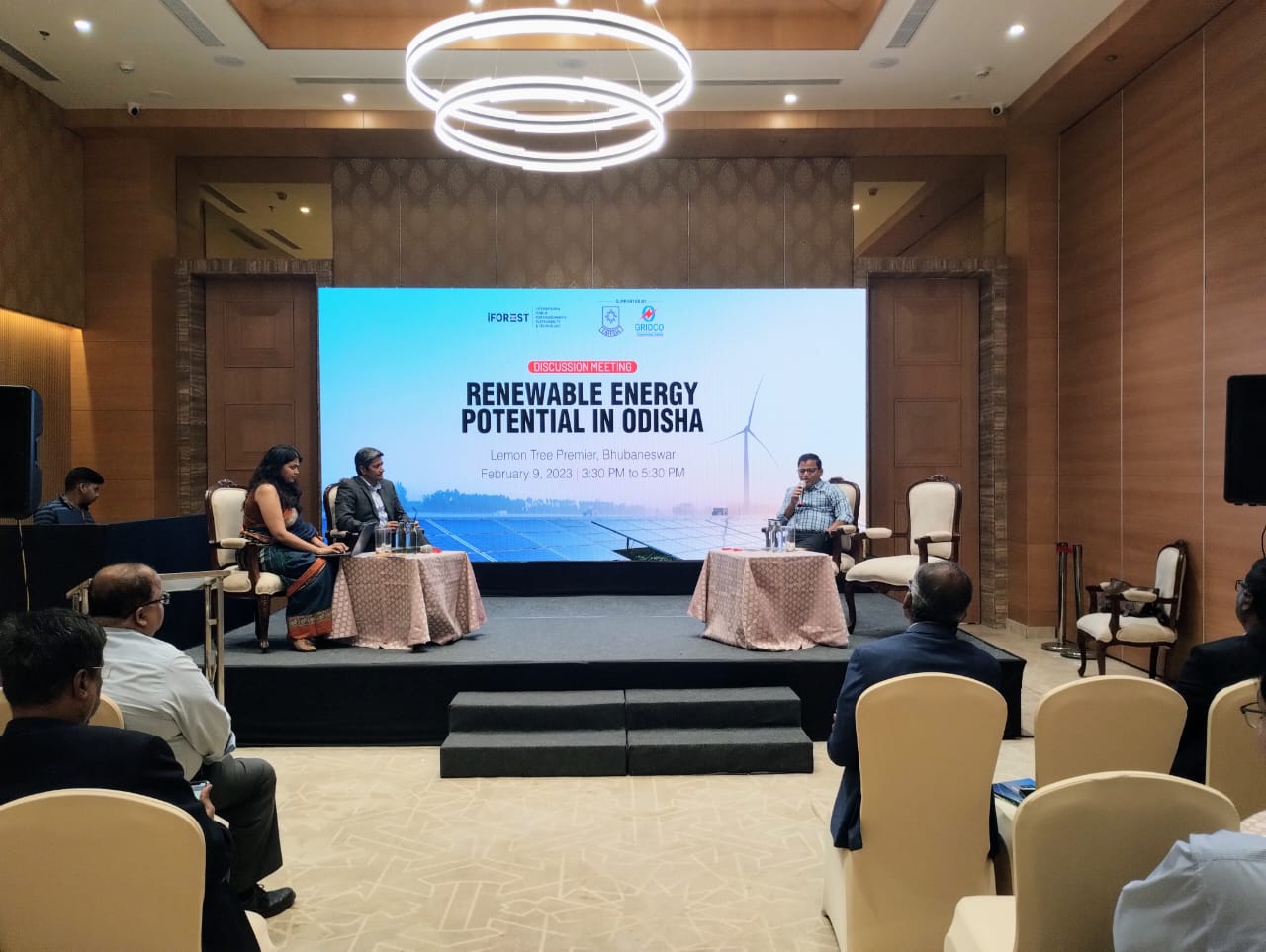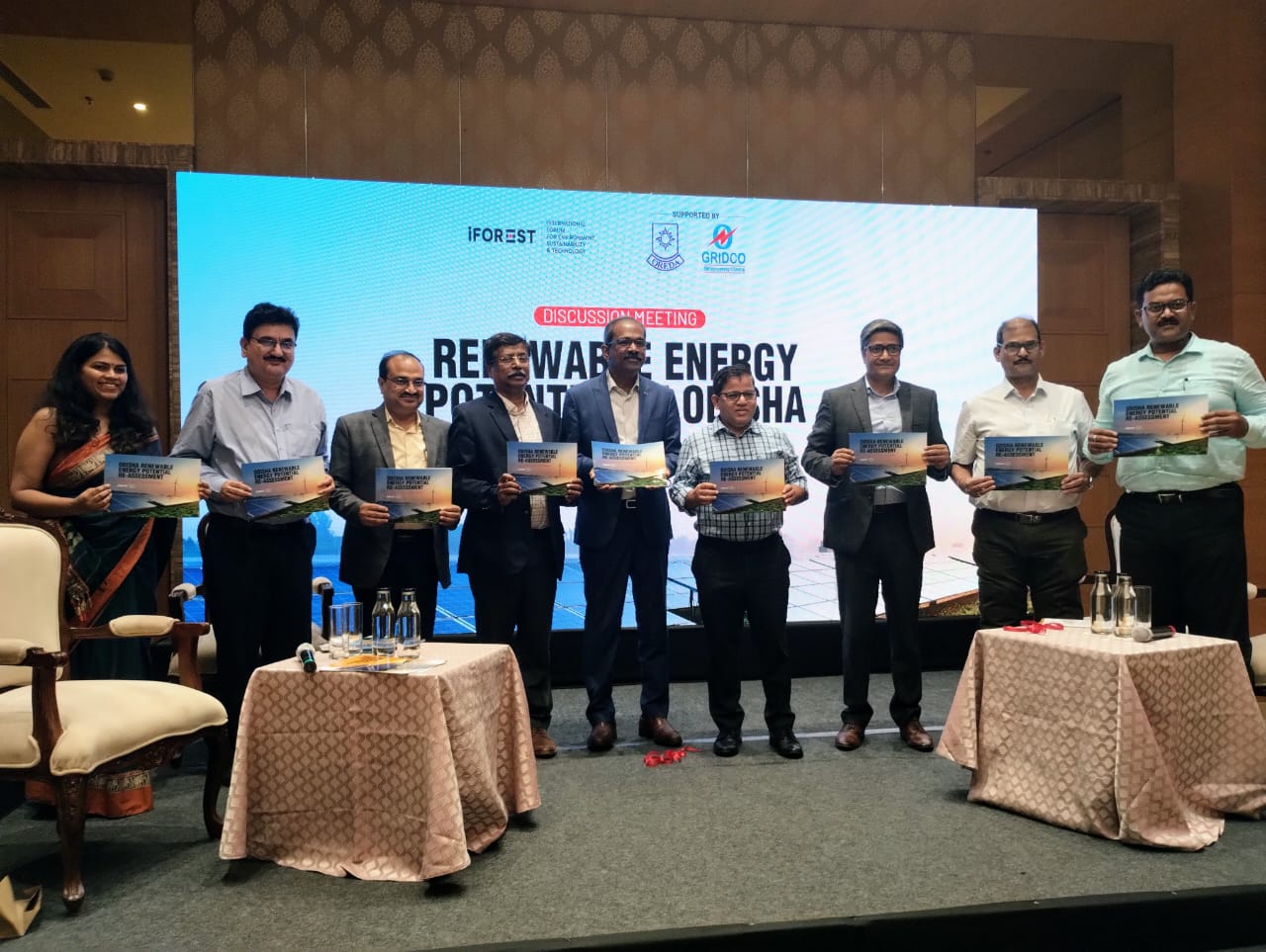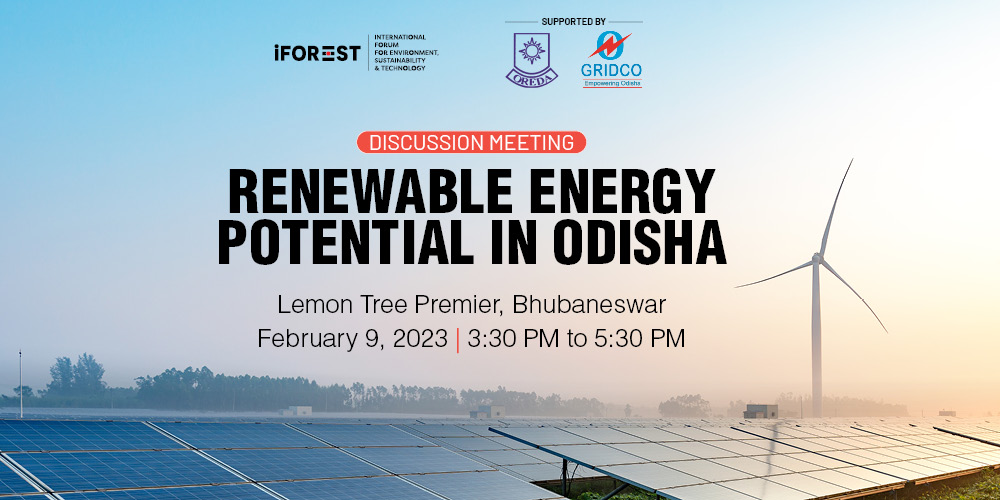
Renewable Energy Potential in Odisha
The International Forum for Environment, Sustainability and Technology (iFOREST) released a report titled “Odisha Renewable Energy Potential Re-assessment: Focus on Solar, Wind and Biomass” at a discussion meeting chaired by the Shri Nikunja Bihari Dhal, Additional Chief Secretary (ACS), and Principal Secretary, Energy Department.
The meeting was attended by several state government officials and representatives of the state’s renewable energy industry and institutions. It was organised by iFOREST with the support of GRIDCO and OREDA under an ongoing MoU signed for knowledge, planning and capacity-building support to enhance the role of RE in Odisha’s energy mix.
The report highlights that in contrast to the general perception, Odisha has significant RE generation potential and can emerge as a major RE state. Even with modest use of wasteland and reservoir area, the state can install nearly 170 GW of solar capacity, which is six to seven times higher than the Ministry of New and Renewable Energy (MNRE) estimate. In some districts like Koraput, Malkangiri, Keonjhar, Angul and Keonjhar, the solar potential comparable to leading RE states like Karnataka and Gujarat.
The key findings of the report, as highlighted during the meeting, are as follows:
- Majority of the assessed solar potential for ground-mounted solar projects is concentrated in 16 districts. Of these, Angul, Bolangir, Keonjhar, Koraput and Malkangiri are key districts due to the higher concentration of large land patches with low socio-ecological conflict and substantially higher insolation.
- For floating solar projects, large capacity projects of 1.5-3 GW can be set up at the Rengali, Tikilipada, Upper Indravati, Nabrangpur, Jalaput and Hirakund reservoirs.
- For solar rooftop projects, the Bhubaneshwar block has the highest potential, followed by other urban blocks of Baleshwar and Jatani and the industrial blocks of Kujanga, Kuanrmunda, and Jharsuguda.
- For wind power projects, 86 locations are identified with an average wind speed ranging from 6.19 m/s to 8.78 m/s at 150m hub height across 16 districts. However, on-ground studies ate required for detailed assessment.
- For biomass projects, Bargarh district has the highest potential, followed by Kalahandi and Baleswar districts.
The potential re-assessment report aims to support RE sector growth in Odisha aligned with the objectives of the recently released Odisha Renewable Energy Policy (OREP), 2022. As per the policy, the state needs 21,700 MW of new RE capacity by 2029-30 to meet the new renewable purchase obligations (RPO). Of this, about 16,000 MW is required by industries for captive use and 5,700 MW by the utility. Currently, Odisha largely relies on RE imports from other states to meet its RPO requirements, missing out on the investment opportunity within the state.
During the event, iFOREST also released a factsheet on “Impact of Odisha Renewable Energy Policy 2022” which highlighted the environmental and economic benefits associated with the implementation of the new policy.
According to the new research, full implementation of OREP-2022 would lead to:
- Reduction in carbon emissions from the utility power in the state by 29%-32% by 2029-30, putting Odisha firmly on the path of the Net-Zero target.
- Reduction in air pollution from the utility coal-based thermal power plants – particulate matter (PM), SOx and NOx – by 29%.
- Increase in consumer tariff minimally by 2-3%.
- Diversion of only 1.8% of the total wasteland area or 8.3% of the total reservoir area for setting up setting up 17,000 MW of solar.

